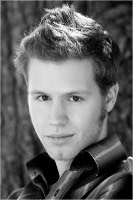I've always liked chords. Big chords, small chords, sad chords, scary
chords -- but especially big, juicy, jazzy chords. Like GMaj7/A, or
Bb13#11. The first time I heard a modern big band blast a polychord
through 13 different horns, the texture and emotional power kept me
skipping home. And the first time I made a beautiful chord sound on my
very own guitar, when I was just starting my musical adventure at age
13, I knew I was hooked. I've been writing them ever since. Ever hear
a big, thick, juicy chord sung by a vocal group? It's nasty. It's what
makes me love my occupation as an arranger, or even my job as a jingle
writer in cases where an ad calls for denser harmony.
Chords are your basic building block of songs. My mother once told me
"I need a melody I can hang my hat on." (Since my mother doesn't wear
a hat, I assume she was quoting someone else, but that's another
story.) Anyone who plays guitar or piano know that it just takes a
progression of four (or even fewer) triads and you've got your very
own original song. For many modern pop musicians the chords are the
most prominent part of the arrangement. Sometimes all it takes to
figure out what song you're listening to on the radio is to hear the
guitar strum the first two bars.
Whether we know it or not, though, we hear chords even if they're not
actually played when we listen to music. Melodies live inside a world
established by chords. That why even untrained musicians sometimes
hum unrecorded vocal harmonies while listening to music. So powerful
is the effect of harmony that it ingrains into our consciousness a
framework into which all music must necessarily fall. When we see a
new breakfast cereal advertised on T.V., we conceive of its taste --
indeed, even predict its worth -- based on how it will fare in a bowl
of milk. So it is with a lone melody, which gets it push and pull, its
caress and its climax, from a universe established by chords.
Subscribe to:
Post Comments (Atom)

No comments:
Post a Comment